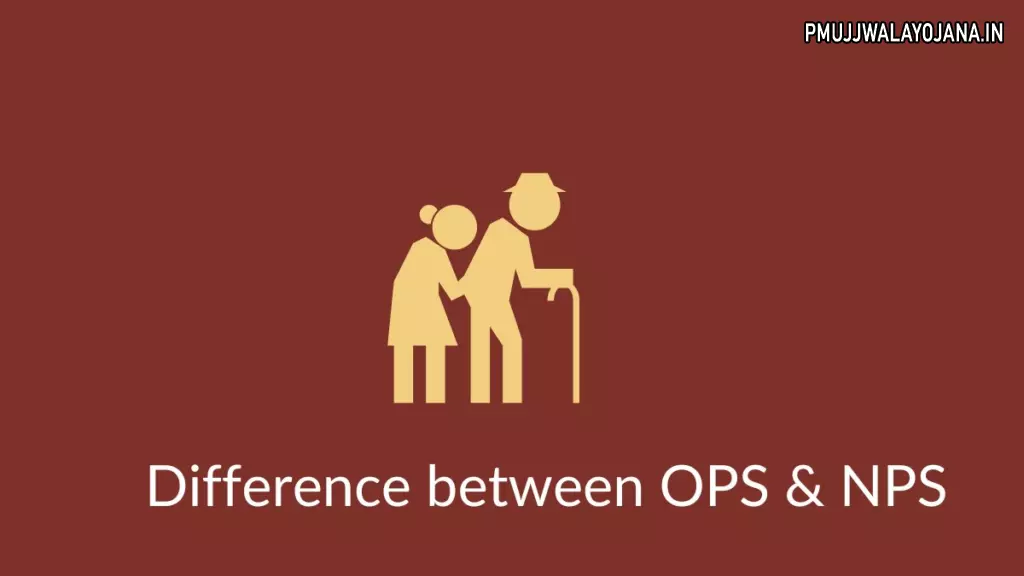Understanding the Old Pension Scheme and the New Pension Scheme
Many Indian states are choosing to go back to the Old Pension Scheme (OPS) for government employees. States like Punjab, Rajasthan, Chhattisgarh, and Jharkhand have already brought back OPS. In this article, we’ll explain the differences between the Old Pension Scheme and the New Pension Scheme (NPS), including their benefits and goals.

Overview of the Old Pension Scheme (OPS)
- Under OPS, government employees don’t contribute from their salary; the employer covers the entire pension.
- OPS was closed in 2003 and replaced by NPS starting April 1, 2004.
- When employees retire, they get a pension worth 50% of their last basic salary plus dearness allowance (DA), or the average of their last 10 months’ wages, whichever is higher.
- Employees must have worked at least 10 years to qualify.
- Pension payments are promised every month after retirement.
- The pension income received is exempt from income tax.
- OPS only applies to government employees eligible for pensions.
- Because people are living longer, OPS has become expensive and hard for governments to manage.
Overview of the New Pension Scheme (NPS)
- NPS started on April 1, 2004, and is a pension plan where employees contribute a part of their salary.
- Government employees contribute 10% of their basic salary to NPS; the employer adds 14% as of April 2019.
- Private sector employees can choose to join NPS voluntarily.
- Contributions are invested in market-linked instruments managed by professional fund managers.
- NPS returns depend on market performance and are not guaranteed.
- You can get tax deductions up to Rs 1,50,000 under Section 80C, plus an extra Rs 50,000 under Section 80CCD(1B).
- At retirement, 60% of the pension fund can be withdrawn tax-free; the remaining 40% must be used to buy an annuity which gives monthly pension payments.
- NPS is open for all Indian citizens aged 18 to 65.
Main Differences Between Old Pension Scheme and New Pension Scheme
- OPS guarantees a fixed pension based on last salary, while NPS returns depend on investments.
- OPS pension income is tax-free, but parts of NPS payouts can be taxable.
- OPS is fully funded by the government; NPS is funded by both employees and employers.
- OPS carries no risk for employees, but NPS involves market risks.
- OPS is only for government employees; NPS is for both government and private sector workers.
Comparison Table: NPS vs OPS
| New Pension Scheme (NPS) | Old Pension Scheme (OPS) |
| Investment-based pension plan with market-linked returns. | Non-investment based, fixed pension plan. |
| Returns depend on asset allocation and market performance. | Guaranteed pension of 50% of last salary. |
| Open to government and private employees. | Only for government employees. |
| Contributions made monthly from salary; involves risk. | No employee contributions; risk-free. |
| Eligible for tax deductions; pension partly taxable. | Pension income fully tax-free. |
| Can potentially give larger returns but with uncertainty. | Fixed and stable returns based on last salary. |
| Sustainable and stable for government finances. | Unsustainable due to rising life expectancy and costs. |
Why Is NPS Important Compared to OPS?
- Since January 1, 2004, the government has used NPS for all new workers except those in the armed forces.
- Most states, except Tamil Nadu and West Bengal, use NPS because of rising pension costs.
- OPS is a pay-as-you-go system funded by current revenues, which is becoming financially difficult to maintain.
- State pension liabilities are growing fast, with pension expenses taking up a large part of revenue.
- Longer life expectancy means pensions are paid for longer, increasing costs.
Choosing between OPS and NPS depends on your willingness to take risks, what benefits you want, and your eligibility. Knowing the details of these schemes can help you plan better for your retirement.